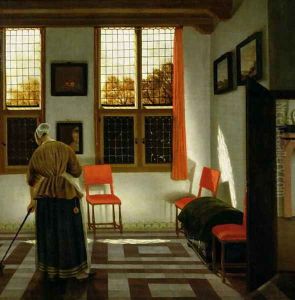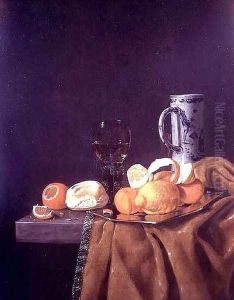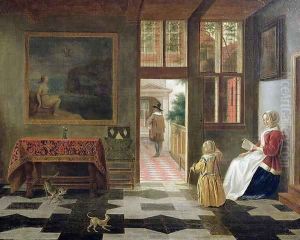(Elinga) Pieter Janssens Paintings
Pieter Janssens Elinga was a Dutch Golden Age painter, known primarily for his interior scenes and still lifes. Born in 1623 in Antwerp, he became an influential figure within the Dutch art scene, although much of his life remains shrouded in mystery. Elinga is often associated with the city of Rotterdam, where he is believed to have spent a significant portion of his life and career, although there is no concrete evidence confirming this.
Elinga’s work is characterized by his meticulous attention to the play of light and shadow, and the quiet, contemplative atmosphere of his domestic interiors. He was heavily influenced by the Delft School of painting and artists such as Johannes Vermeer and Pieter de Hooch, who were renowned for their treatment of light and spatial harmony. Elinga's paintings often depict rooms with open doors or windows, suggesting a space beyond the immediate environment and inviting viewers to ponder the unseen.
Despite his talent, Elinga did not gain widespread fame during his lifetime, and his works were often attributed to other artists. It was not until the 20th century that art historians began to properly attribute and recognize his contributions to Dutch painting. His works are now held in various museums and collections around the world, appreciated for their serene beauty and the skill with which they were composed.
Pieter Janssens Elinga died in 1682, leaving behind a modest but significant body of work that continues to be studied and admired for its quiet elegance and technical prowess. His paintings provide a window into the daily life and artistic preoccupations of the 17th century in the Netherlands, and he remains an important figure for scholars interested in the Dutch Golden Age and the development of genre painting.


